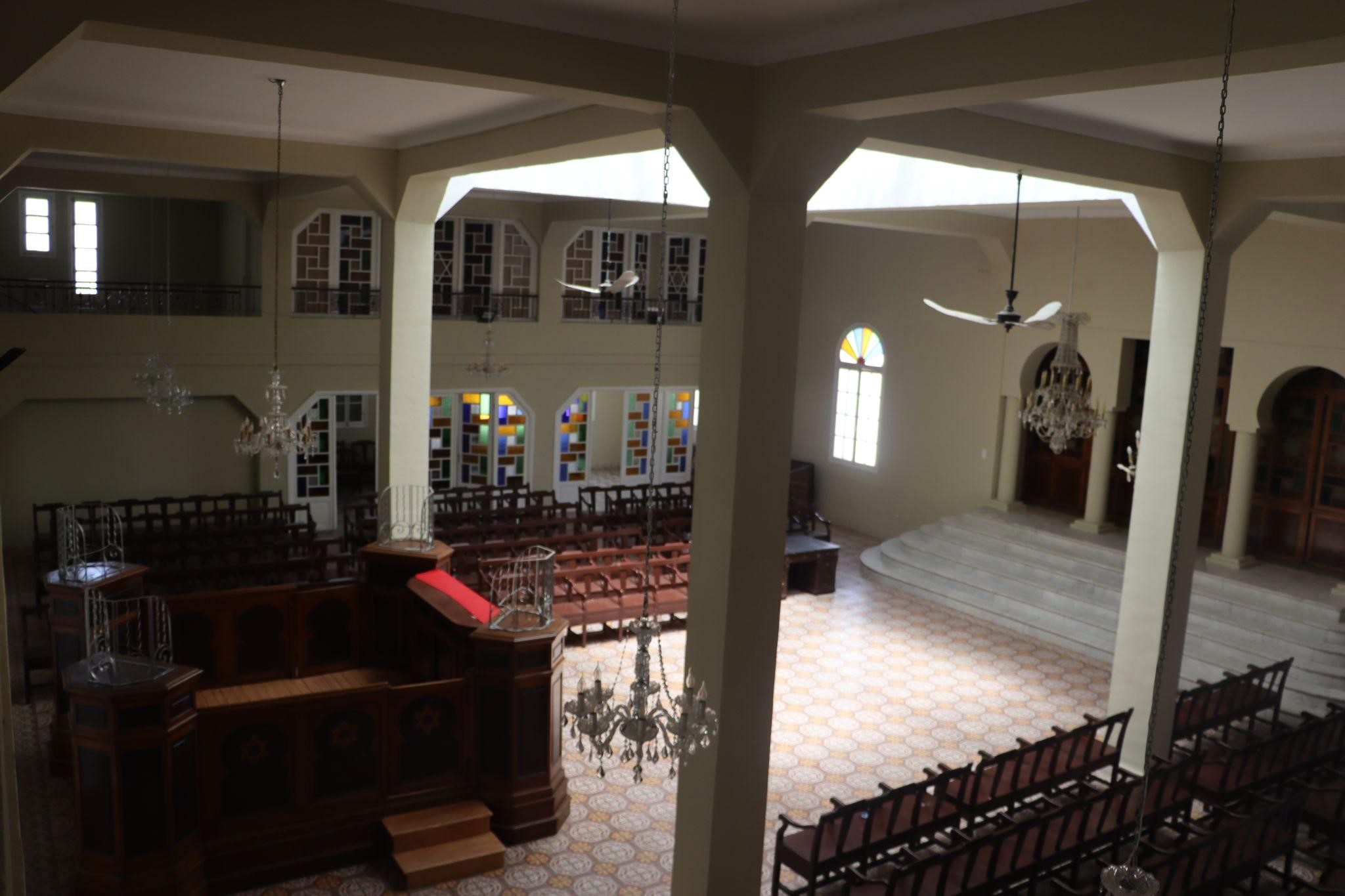Arabic Version
Heritage Month in Morocco
The Portuguese Church in Essaouira
By Yvette Broex
Essaouira, Morocco

The main entrance of the Portuguese church in Essaouira. Photo: HAF
Morocco is a Muslim country (almost 99%), but the kingdom’s tolerance regarding other religions is outlined in the constitution and today, Morocco is home to a small Christian community. Essaouira, a city located on Morocco’s Atlantic coast, is a great example of how religious diversity is deeply-rooted in the history of Morocco, as Jewish, Muslim, and Christian communities have lived peacefully in this city. For that reason, Essaouira is referred to as the ‘city of coexistence.’
Today, Essaouira is home to two churches: Notre Dame de l’Assomption Church -the only church in Morocco whose bells still ring- and the Portuguese church which is currently being renovated. The church dates back to the 18th century and turned into a neglected ruin through the centuries. According to oral and written traditions, the church was built by the Portuguese, but was used by the French, Arabs, and others. However, other sources state that the church was built by the Spanish missionaries present in the city. Nevertheless, the Portuguese built Essaouira on a Phoenician merchant fortress in the 16th century, which was previously used as a Roman trading post. The Moroccans tried to capture the city multiple times but it was well-guarded by the Portuguese. It was Sultan Sidi Mohammed Ben Abdallah who led his troops to a successful mission to capture Essaouira in the 18th century. Because the city was well protected, it was named Amogdul Bereber, which means well-guarded. Later, it was named Mogador by the Spanish.
The church is located in the old medina of Essaouira. The building has a central courtyard and consists of three levels, with a stone-carved entrance decorated with two pilasters. The ground floor of the church consists of storerooms; the prayer room is located on the middle floor, as well as the guestrooms; and the highest floor has a tower and a terrace level. Because of the deteriorating state of the building, the church was closed for years. Today, restoration work is being carried out in an attempt to revive this historical site which is integral to Souiri heritage as it reflects the multiculturalism and diversity that marks the Moroccan identity. The site’s renovation will help preserve the illustrious interfaith past of Essaouira for future generations.
This article is part of the Heritage Month in Morocco campaign (April18 – May 18) that celebrates the Kingdom’s rich heritage, as part of the USAID Dakira Program, which is implemented by the High Atlas Foundation and its partners. The program aims to strengthen inter-religious and inter-ethnic solidarity through community efforts that preserve cultural heritage in Morocco.
The article was completed with the support of the United States Agency for International Development (USAID), and the High Atlas Foundation is solely responsible for its content, which does not necessarily reflect the views of USAID or the Government of the United States.





